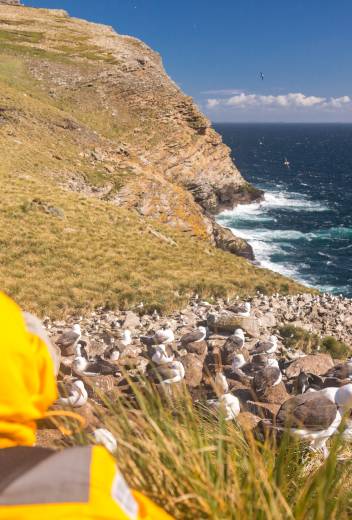Eyes fixed dead ahead, you see an iceberg looming large, glistening blue in the bright sun, looking as though it was hand-carved and set right in your way. No matter – a few strokes on your left and you’re on course to track around it, now heading toward a snow-covered beach. A lone leopard seal turns his head to give you a once-over. You hold your breath.
Incredibly, he quickly loses interest.
You’re not a threat at all, out here in the bay, quietly gliding across the surface of the sea on a stand-up paddleboard.
It’s the closest you can get to walking on water.
The Stand-Up Paddleboard Experience

You might only recently have heard of stand-up paddleboarding as the exciting new adventure sport sweeping beaches worldwide, but for thousands of years, African and South American civilizations have used long sticks to propel themselves over the water on boards or canoes.
Those primitive paddleboards enabled warriors to silently infiltrate enemy areas, and hunters favored the method of travel for sneaking up on prey.
Today, stand-up paddleboarding (SUP) is an exciting, eco-friendly and easy-to-learn Antarctic Adventure Option that puts you right in the middle of the aquatic action. From the surface of the sea, you have the perfect vantage point for viewing life on Antarctica’s frozen beaches, without disturbing the penguins, seals and walrus that sun and hunt there. You’re in an incredible position to see a minke whale or orca breach.
New to stand-up paddleboarding? Check out these tips to help you prepare for your own incredible Antarctic adventure.
SUP on an Antarctic Expedition: How It Works

Paddleboards are similar to surfboards, but they have a few key differences. They’re typically much bigger and have a handle (called the soap dish) for easier carrying. On the bottom, near the back of the board, 1 to 3 “fins” provide stability and help you track straight across the water. Instead of using wax for grip as you would with a surfboard, stand-up paddleboards have a foam or rubber surface for standing on, which not only gives you better traction, but it’s more comfortable to stand on, too.
When you book this Adventure Option, you’re provided with everything you need for a fantastic time on the water. An experienced guide helps your group gear up and prepare for the stand-up paddleboarding experience. Your gear includes the following:
- A top-quality, lightweight paddleboard
- A paddle
- A dry suit with neoprene booties
- A PFD (personal flotation device)
If you’re interested in taking part, it’s best to book ahead of your departure, as 10 people can book stand-up paddleboarding adventures pre-trip. On-board sign-ups are offered on a first-come, first-served basis and only if conditions permit additional trips out. SUP is offered on select Antarctic expeditions aboard the Ocean Endeavour. If you aren’t sure whether the expedition of your choice offers SUP, check with a Polar Travel Adviser.
Getting Started with Stand-Up Paddleboarding
If you have a chance to hit a warm-water beach and rent a stand-up paddleboard or take lessons ahead of your Antarctic expedition, give it a try! If that’s not possible, don’t sweat it – even first-timers have fun, successful trips out with an experienced expedition leader.
The first time I tried SUP, I learned 3 important things.
- It’s OK to sit or kneel if you’re feeling unsure. Kneeling for a few minutes can give your legs a break and lead to success when you stand. No one is going to judge.
- Stay in a kneeling position until you’re in deep enough water. This isn’t a problem in Antarctica, as you’re launching from and accompanied by a Zodiac in deep water.

Finally, here a few tips to help you stay comfortable and maximize your SUP adventure.
- Wear sunscreen and a lip balm with SPF 15 or higher, since the glare of the sun off the water can cause a sunburn.
- Bring your waterproof camera – the views are incredible! Keep it in an inside pocket when not in use, to preserve the battery life.
- Try not to stare down at your feet or only straight ahead. It’s OK if at first you might be more comfortable looking ahead. As you find your “sea legs,” however, you won’t be able to help looking around you to take in the surrounding beauty!
Want to learn more? Download the new Quark brochure to find out more about stand-up paddleboarding and other exciting Adventure Options offered on Antarctic voyages!









